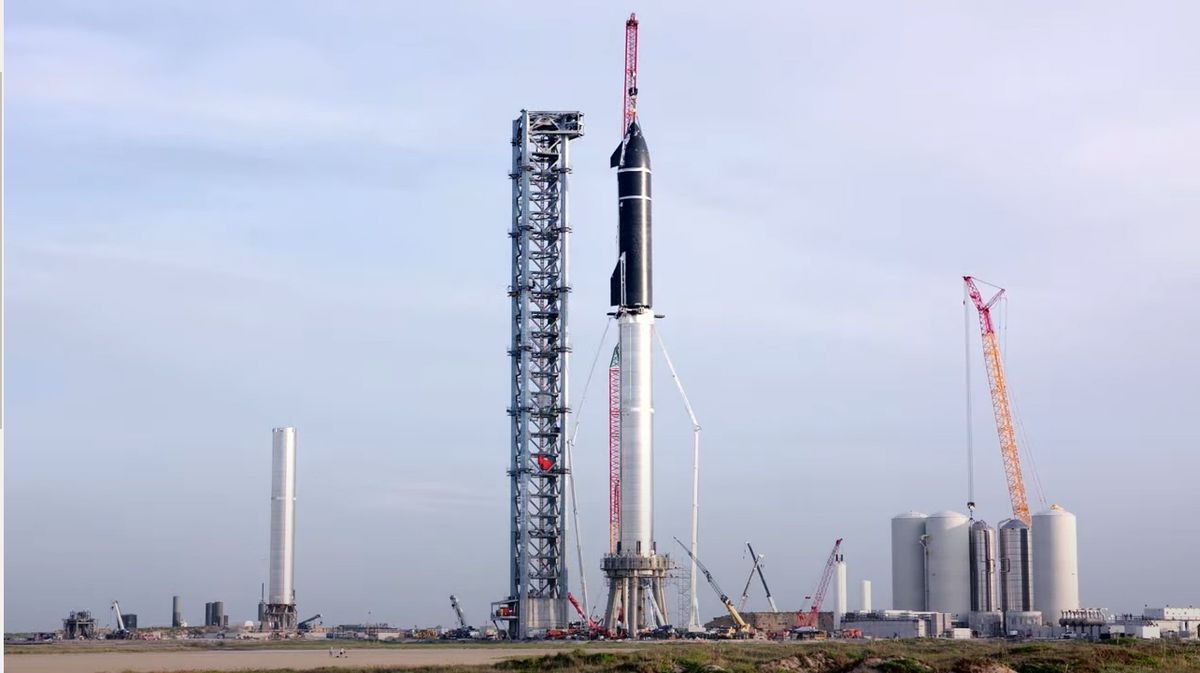
The first orbital launch of SpaceX’s Starship Mars rocket has been pushed back by at least another month.
SpaceX aims to launch that milestone test mission shortly after the U.S. Federal Aviation Administration (FAA) wraps up an environmental assessment of Starbase, the South Texas site where the company builds, tests and launches Starship vehicles.
That review was initially supposed to be done by Dec. 31. But a few days before the deadline, the FAA pushed the estimated completion date back to Feb. 28, citing the need to consult further with other agencies and review the thousands of public comments submitted in response to the draft assessment, which was released in September.
And today (Feb. 14), the agency announced that the final report has been delayed again, this time to March 28, to allow yet more time for comment review and interagency consultation.
Photos: SpaceX lifts huge Super Heavy rocket onto launch stand
The timeline shift probably doesn’t come as a shock to SpaceX or its founder and CEO, Elon Musk. During a livestreamed Starship update last week, for example, Musk said the company has “gotten sort of a rough indication” that an FAA approval may be coming in March.
If that does indeed happen, don’t expect a long wait before Starship’s first-ever orbital attempt.
“So right now, I think we’re tracking to have the regulatory approval and hardware readiness around the same time,” Musk said during the Starship update.
An approval isn’t the only possible outcome, of course. The FAA could decide that an environmental impact statement — a more in-depth and time-consuming review — is needed for the activities at Starbase. If that ends up being the case, then the first Starship orbital test flight would likely take place from Pad 39A at NASA’s Kennedy Space Center (KSC), on Florida’s Cape Canaveral, Musk said.
“We actually are approved from an environmental standpoint to launch from 39A,” he said. “So I guess our worst-case scenario is that we would, I don’t know, be delayed for six to eight months to build up the Cape launch tower and launch from there.”
(SpaceX has already launched a number of missions, including flights of its cargo and crew Dragon capsules bound for the International Space Station, from Pad 39A. But Starship requires a bigger launch tower.)
SpaceX eventually aims to launch Starship from multiple locations. For instance, the company is also modifying two deep-sea oil rigs to serve as launch towers for the giant vehicle, Musk noted during the Starship talk.
Related stories:
Starship consists of two elements, a huge first-stage booster known as Super Heavy and a 165-foot-tall (50 meters) spacecraft called Starship. Both are designed to be fully and rapidly reusable, a breakthrough that Musk and SpaceX believe will make Mars colonization and other grand exploration feats economically feasible.
Starship prototypes have conducted multiple test flights from Starbase to date, but those were all relatively short hops that reached a maximum altitude of about 6.2 miles (10 kilometers). The upcoming orbital flight will go much higher and farther, obviously, and it will mark the first time a Super Heavy is involved.
The FAA’s delay announcement came on the same day as other big SpaceX and Starship news: Billionaire Jared Isaacman announced today that he has booked three spaceflights with the company, including one that will be the first-ever crewed Starship mission.
Isaacman is a repeat customer for SpaceX. He booked and commanded Inspiration4, the first-ever all-private crewed mission to Earth orbit, which used a SpaceX Falcon 9 rocket and Dragon capsule. Inspiration4 launched in September, sending Isaacman and three other people on a three-day orbital jaunt.
Mike Wall is the author of “Out There” (Grand Central Publishing, 2018; illustrated by Karl Tate), a book about the search for alien life. Follow him on Twitter @michaeldwall. Follow us on Twitter @Spacedotcom or on Facebook.



